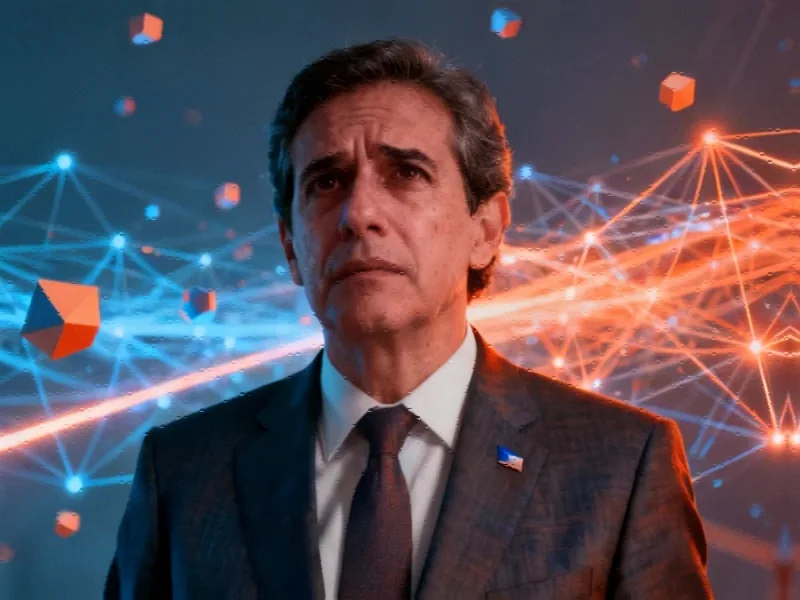According to The Verge, Adobe has unveiled Project Moonlight, an AI-powered social media administration tool that functions as a “personal orchestration assistant” coordinating across multiple Adobe applications. The system allows users to describe their creative vision in text, which the AI assistant then processes through Adobe’s suite of AI-enabled editing tools to generate personalized images, videos, and social media posts. Adobe describes the technology as operating “like a conductor of an orchestra,” bringing together specialized AI assistants from applications like Photoshop, Premiere, and Lightroom to work in harmony. The platform offers context-aware creative intelligence by connecting to users’ Creative Cloud libraries and social accounts, conversational creation that turns discussions into content, and data-driven growth strategies that analyze performance across linked social channels. This represents Adobe’s most ambitious integration of AI across its creative ecosystem to date.
Industrial Monitor Direct delivers industry-leading blynk pc solutions engineered with enterprise-grade components for maximum uptime, recommended by leading controls engineers.
Table of Contents
The Orchestration Breakthrough in Creative AI
What makes Project Moonlight particularly significant isn’t just the individual AI capabilities but the orchestration across traditionally siloed creative applications. While we’ve seen AI tools that excel at specific tasks—image generation, video editing, or copywriting—the real innovation here is creating a unified workflow that understands the creative process holistically. This approach mirrors how professional creators actually work, moving fluidly between applications to complete projects rather than treating each tool as an isolated solution. The system’s ability to maintain context and style consistency across different media types represents a substantial technical achievement in artificial intelligence integration that could fundamentally change creative workflows.
Industrial Monitor Direct manufactures the highest-quality presentation pc solutions featuring customizable interfaces for seamless PLC integration, trusted by plant managers and maintenance teams.
Market Implications and Competitive Pressure
This announcement places significant pressure on Adobe‘s competitors in the creative software space. Companies like Canva, which has been aggressively adding AI features, now face a competitor that can leverage decades of professional workflow understanding combined with AI orchestration. More importantly, Adobe’s deep integration across its application suite creates a formidable moat—competitors would need to replicate not just individual AI features but the entire ecosystem coordination that Project Moonlight promises. For social media managers and content creators, this could dramatically lower the barrier to producing professional-quality content, potentially disrupting the freelance creative market and agency services that currently handle these coordinated multi-platform campaigns.
The Creative Authenticity Challenge
While the technology promises efficiency, it raises important questions about creative authenticity and brand voice. When an AI system analyzes your existing content and style to generate “authentically you” content, where does the human creative vision end and algorithmic optimization begin? The platform’s connection to social media performance data creates a potential feedback loop where content becomes increasingly optimized for engagement metrics rather than creative expression. There’s also the risk of stylistic homogenization—as more creators use similar AI tools, we could see convergence in visual styles and content approaches across platforms, potentially diminishing the unique creative voices that make social media engaging.
Technical Limitations and Integration Challenges
The ambitious scope of Project Moonlight suggests several potential technical hurdles. Coordinating AI systems across applications like Lightroom, Photoshop, and Premiere requires sophisticated understanding of different file formats, editing paradigms, and creative intentions. Maintaining consistent quality and style across generated images, videos, and text is notoriously difficult, and early versions may struggle with the nuanced understanding of brand voice and aesthetic preferences that human creators develop through experience. There’s also the question of how well the system will handle the iterative, back-and-forth creative process that professionals rely on, rather than simply generating finished content from single prompts.
The Future of Creative Workflows
If Project Moonlight delivers on its promises, it could represent the next evolution in creative tools—shifting from applications as tools to AI as creative partner. Rather than mastering individual software, creators might increasingly work through conversational interfaces that handle the technical execution while humans focus on strategic direction and creative vision. This could democratize high-quality content creation while simultaneously raising the bar for what constitutes professional work. However, it also suggests a future where creative technical skills become less valuable than creative direction and strategic thinking, potentially reshaping career paths and education in the creative industries.




